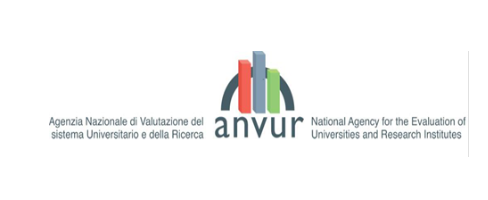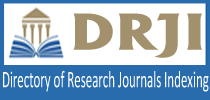EXPERIENCES OF YOUTH IN TRANSITION TO ADULTHOOD: THE MODELS DEVELOPED IN BASE OF GENERATION AND GENDER SURVEY
DOI:
https://doi.org/10.36004/nier.es.2023.2-07Keywords:
young people, transition to adulthood, early transitions, MoldovaAbstract
Understanding the specificities and patterns of transition to adulthood and timing of young adults' milestones is essential for developing targeted and effective social integration policies that address the needs and vulnerabilities of youth subcategories. The aim of the paper is to develop a typology of transition models within the specific context of Moldova by classifying different pathways that young people follow during the transition into adulthood.
This study uses the data from Generations and Gender Survey (GGS) conducted in Moldova in 2020. Pathways are derived from key life events that mark the transition to adulthood, retrospectively observed for young people 25-35 years old (N = 2540). To explore the different patterns of transitions Two-Step Cluster analysis was used. This exploratory model is relevant for creating typologies and processing both continuous and categorical variables.
The analysis identifies four main clusters of transition to adulthood, showing variations between them. The “complex transition” cluster describes young people who experience a smoother transition to adulthood, characterized by a higher level of education followed by stable employment opportunities, while demographic events such as marriage and parenthood occur later in this group. The “uncertain transition” cluster reflects a degree of instability and uncertainty in terms of employment, many young people, especially men, are employed temporarily or informally, while women in this cluster are often on maternity or childcare leave without being employed. The “precarious transition” cluster represents inactive young people in the labor market, most of them having a low level of education, contributing to their precarious situation on the labor market. The “early transition” cluster suggests a pattern of early transitions into adulthood, often accompanied by limited educational attainment and early family formation.
Downloads
References
Akulova, M. Yu., Antipova, E. A., Artemenko, E. K., Belov, A. A., Borodacheva, E. M., Burlutskaya, M. G., Dmitrieva, O. E., Elsukova, N. A., Efimova, N. V., Kapustin, S. A, Kirillova, A. V., Komarovskiy, A. V., Kroytor, S. N., Kupchinova, T. V., Lapeto, A. O., Mazol, O. I., Makarevich, E. E., Mardas, D. M., Nazarenko,Yu. S,. . . . & Yakovleva, N. A. (2018). BELARUS: struktura semii, semeynye otnosheniya, reproduktivnoe povedenie. Tom II. Analiz rezultatov issledovaniya «Pokoleniya i gender». Minsk: Belsens. https://belarus.unfpa.org/sites/default/files/pub-pdf/Digest%20GGS%20_ru.pdf
Arnett, J. (2000). Emerging adulthood: A theory of development from the late teens through the twenties. American Psychologist, 55(5), 469-480. https://doi.org/10.1037/0003-066X.55.5.469
Beck, U. (2002). The Cosmopolitan Society and Its Enemies. Theory, Culture & Society, 19(1-2), 17-44. https://doi.org/10.1177/026327640201900101
Beck, U., & Beck-Gernsheim, E. (2002). Individualization. Institutionalized Individualism and Its Social and Political Consequences. London: SAGE.
Becker, G. (1964). Human Capital. A Theoretical and Empirical Analysis. New York: Columbia University Press for the National Bureau of Economic Research.
Billari, F., Hiekel, N., & Liefbroer, A. (2019). The Social Stratification of Choice in the Transition to Adulthood. European Sociological Review, 35(5), 599-615. https://doi.org/10.1093/esr/jcz025
Billari, F., & Liefbroer, A. (2010). Towards a new pattern of transition to adulthood? Advances in Life Course Research, 15(2-3), 59-75. https://doi.org/10.1016/j.alcr.2010.10.003
Buchmann, M. (1989). The script of life in modern society: entry into adulthood in a changing world. Chicago: University of Chicago Press.
Buciuceanu-Vrabie, M., & Gagauz, O. (2017). Tinerii pe piața muncii din Republica Moldova: competențe și aspirații. Chișinău: INCE.
Caroleo, F., Rocca, A., & Neagu, G. (2021). NEETs and the Process of Transition From School to the Labor Market: A Comparative Analysis of Italy, Romania, and Bulgaria. Youth & Society 54(2), 109-129. https://doi.org/10.1177/0044118X211056360
Chistruga-Sinchevici, I. (2021). Echilibrul dintre muncă și viața de familie: necesități ale părinților și rolul politicilor sociale. Chișinău: INCE. https://doi.org/10.36004/nier.2022.978-9975-89-251-3
Coles, B. (1995). Youth And Social Policy. London: Routledge. https://doi.org/10.4324/9780203991015
Corijn, M., & Klijzing, E. (2001). Transitions to Adulthood in Europe. European Studies of Population. Vol. 10. Springer-Science+Business Media, BV. https://doi.org/10.1007/978-94-015-9717-3
Crișmaru, M., Gagauz, O., & Buciuceanu-Vrabie, M. (2018). Incluziunea tinerilor aflaţi în afara sistemului de educaţie, formare și ocupaţie profesională (tineri NEET): studiul sociologic. Chișinău. http://dspace.ince.md/jspui/handle/123456789/1822
Elder, G. H. (1998). The Life Course as Developmental Theory. Child Development, 69(1), 1-12. https://www.jstor.org/stable/1132065
Elzinga, C., & Liefbroer, A. C. (2007). De-standardization of Family-Life Trajectories of Young Adults: A Cross-National Comparison Using Sequence Analysis. European Journal of Populationie, 23(3-4), 225-250. https://doi.org/10.1007/s10680-007-9133-7
France, A. (2007). Understanding Youth In Late Modernity. Open University Press.
Gagauz, O., Buciuceanu-Vrabie, M., Pahomii, I. (2017). Părăsirea timpurie a sistemului educațional: factori și grupuri de risc. Akademos, 2(45), 98-104. https://ibn.idsi.md/ro/vizualizare_articol/53354
Gagauz, O., Buciuceanu-Vrabie, M., Pahomii, I., Știrba, V., Tabac, T., & Grigoraș, E. (2021). Populația Republicii Moldova la 30 de ani de independență: provocări principale și politici necesare. Chișinău: INCE. https://doi.org/10.36004/nier.ccd.2021.978-9975-89-248-3
Ganta, V., & Shamchiyeva, L. (2016). Tranziţia tinerelor și tinerilor spre piaţa muncii în Republica Moldova. Seria de publicaţii Work4Youth, No. 38. Biroul Internaţional al Muncii. Geneva. https://www.ilo.org/wcmsp5/groups/public/---ed_emp/documents/publication/wcms_536294.pdf
Generations and Gender Programm (GGP). (2020). https://www.ggp-i.org/moldova/
Giele, J., & Elder, G. (1998). Life Course Research: Development of a Field. In: J. Giele, & G. Elder (Eds.), Methods of Life Course Research: Qualitative and Quantitative Approaches. Thousand Oaks: Sage Publications.
Grigoraș, E. (2018). Particularitățile tranziției fertilității în Republica Moldova. In: Tendințe contemporane ale dezvoltării științei: viziuni ale tinerilor cercetători (ediția a 7-a, Vol. 2, pp. 261-265). Chișinău: Tipogr. Biotehdesign.
Hall, T., & Coffey, A. (2007). Learning Selves And Citizenship: Gender And Youth Transitions. Journal of Social Policy, 36(2), 279-296. https://doi.org/10.1017/S0047279406000602
Irwin, S., & Nilsen, A. (2018). Understanding youth transitions in difficult times. In: S. Irwin, & A. Nilsen, Transitions to Adulthood Through Recession. London: Routledge. https://doi.org/10.4324/9781315231686
Lesthaeghe, R. (2014). The second demographic transition: A concise overview of its development. Proceedings of the National Academy of Sciences, 111(51), 18112-18115. https://doi.org/10.1073/pnas.1420441111
Mitrofanova, Е. S. (2011). Demograficheskoe povedenie pokoleniy rossiyan v sfere semi i rozhdaemosti. Ekonomicheskiy zhurnal Vysshey shkoly ekonomiki, 15(4), ss. 519-542. [In Rus] https://publications.hse.ru/articles/63622290
Mitrofanova, Е. S. (2016). Perspektivy primeneniya analiza posledovatelnostey: Primer perekhoda vo vzrosluyu zhizn. V: Sotsiologiya i obshchestvo: Sotsialnoe neravenstvo i sotsialnaya spravedlivost: materialy V vserossiyskogo sotsiologicheskogo kongressa. 19-21 oktyabrya 2016 goda. Rossiyskoe obshchestvo sotsiologov. (ss. 9591-9600). Ekaterinburg [In Rus] https://publications.hse.ru/chapters/197808392
Mitrofanova, E. S., & Makarov, S. A. (2023). West and East: convergence or divergence of Millennials’ transition to adulthood in four European countries. Population and Economics, 7(4), pp. 68-90. https://doi.org/10.3897/popecon.7.e112452
Mortimer, J., & Shanahan, M. (2003). Handbook of the Life Course. New York: Kluwer Academic Publishers.
Organisation de Coopération et de Dévéloppement Economiques (OCDE). (2001). Du bien-être des nations: le rôle du capital humain et social. https://www.oecd.org/fr/education/innovation-education/1870581.pdf
Paolini, G., Horváth, A., & Motiejūnaitė, A. (2018). Situation of young people in the European Union. Commission Staff Working Document, European Union.
Pitti, I. (2022). Understanding, Problematizing and Rethinking Youth Transitions to Adulthood. European Commission and the Council of Europe. https://pjp-eu.coe.int/documents/42128013/116339195/Symp_Analytical+Paper+-Transitions+to+Adulthood.pdf/df42d656-d110-4c44-fe5f-c7e0c1336d4e
Schwanitz, K. (2017). The transition to adulthood and pathways out of the parental home: A cross-national analysis. Advances in Life Course Research, 32, 21-34. https://doi.org/10.1016/j.alcr.2017.03.001
Sobotka, T. (2008). The diverse faces of the Second Demographic Transition in Europe. Demographic Research, 19(8), 171-224. https://doi.org/10.4054/DemRes.2008.19.8
Taylor-Gooby, P. (2004). New social risks in postindustrial society: Some evidence on responses to active labour market policies from Eurobarometer. International Social Security Review, 57(3), 45-64. https://doi.org/10.1111/j.1468-246x.2004.00194.x
Unt, M., Gebel, M., Bertolini, S., Deliyanni-Kouimtzi, V., & Hofäcker, Dirk (Eds.). (2021). Social Exclusion of Youth in Europe. The Multifaceted Consequences of Labour Market Insecurity. Bristol: Bristol University Press. https://www.econstor.eu/bitstream/10419/273772/1/1833291387.pdf
Van de Kaa, D. (1987). Europe’s Second Demographic Transition. Population Bulletin, 42(1), 3-55. https://estvitalesydemografia.wordpress.com/wp-content/uploads/2013/04/europec2b4s-second-demographic-transition.pdf
Voicu, B. (2004). Capitalul uman: componente, niveluri, structuri. România în context european. Calitatea Vieții, 15(1-2), 137-157.
Walther, A., & Pohl, A. (2007). Activating the disadvantaged. Variations in addressing youth transitions across Europe. International Journal of Lifelong Education, 26(5), 533-553. https://doi.org/10.1080/02601370701559631
The World Bank in Moldova. (2022). https://www.worldbank.org/ro/country/moldova















